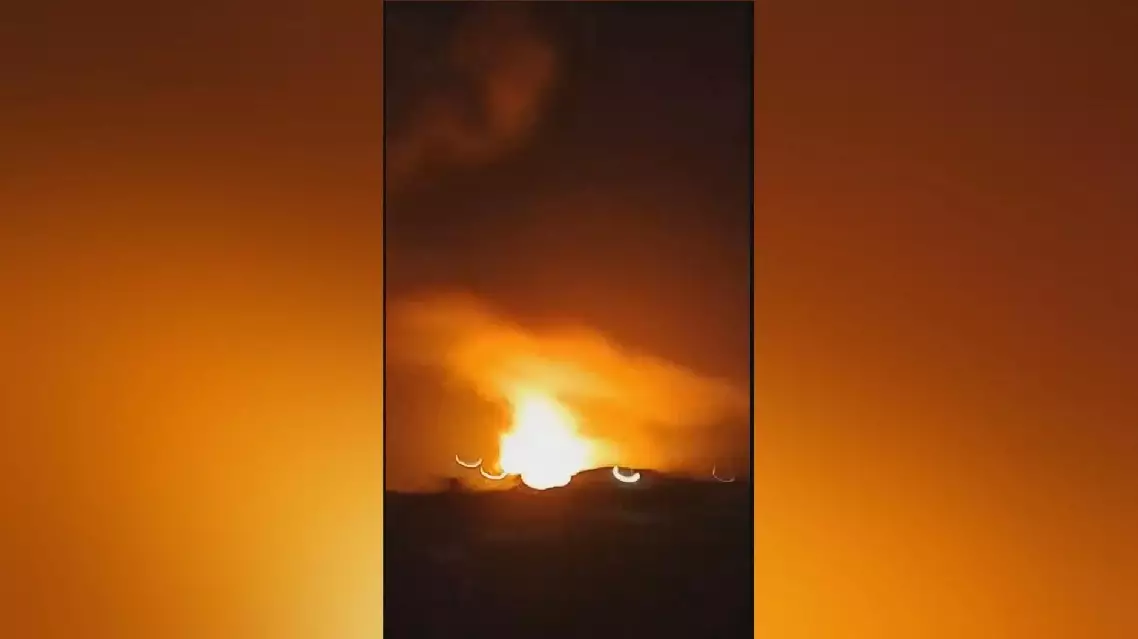The Qiantang River tidal bore, a natural wonder, has lured numerous enthusiasts to Haining City in east China's Zhejiang Province, to capture the mesmerizing spectacle of the ever-changing tides.
A tidal bore is a phenomenon where the leading edge of an incoming tide creates a wave that surges up a river against the flow.
The Qiantang River boasts the world's largest tidal bore, and is called the "Silver Dragon" by locals.
Tide-watching has become a grand folk tradition during the Mid-Autumn Festival, which falls on Tuesday this year.
These enthusiasts have not only captured the stunning scenes of the tides, but also given them vivid names based on their distinct features.
"The crossing tide is more captivating, with two or even three tidal currents merging together. There is also the legendary dragon-scale tide, where the tide water resembles the upturned scales of a dragon," said Pan Linglong, an enthusiast.
"The tides come in different forms. For example, I've captured the crossing tide, the surging tide, and the dragon head tide. Photographing the tides is like unwrapping a surprise gift. The tide appearance changes from day to day and is fleeting. Once captured, the experience can be truly breathtaking," said He Bin, another enthusiast.

Enthusiasts flock to capture spectacular scenes of Qiantang River tidal bores

Enthusiasts flock to capture spectacular scenes of Qiantang River tidal bores
India on Saturday struck three air bases in Pakistan with air-to-surface missiles, prompting Pakistan to launch a military offensive on the same day in response to continued provocations from India.
India carried out missile and drone strikes targeting multiple Pakistani military installations in Punjab province, including Nur Khan Air Base in Rawalpindi district near the capital city of Islamabad, Murid Air Base in Chakwal district, and Shorkot Air Base in Jhang district, but all strategic assets of the Pakistan Air Force remained safe in the attack, Lieutenant General Ahmed Sharif Chaudhry, director general of the Inter-Services Public Relations (ISPR), the media wing of the Pakistani army, told the media in the wee hours of Saturday.
According to anonymous official sources, four missiles were fired at Nur Khan Air Base. Two of them struck the runway at 02:15 and 02:20 local time, while two others were reportedly intercepted by Pakistan's air defense systems.
The attacks resulted in injuries to at least four people, who have since been shifted to a nearby hospital, the sources added.
An eyewitness living near Nur Khan Air Base told a reporter from the China Media Group (CMG) that missiles struck around midnight, causing widespread panic, but fortunately, no one in his village was injured.
"It was around 02:20 on Saturday, you know, it happened at Nur Khan Air Base. Just in front of our house at about 02:20, a missile landed here -- you can show it to the camera -- and exploded. It blasted so loudly that all the nearby neighbors rushed outside. About three to four minutes later, another missile likely landed nearby, but I don't know the exact location. Despite the tense situation, everyone is safe. Now, the sounds of explosions are coming from all directions, and many families and friends are calling to check if we are safe after hearing the news," said an eyewitness.
Following the attacks, the Pakistan Airports Authority (PAA) announced on Saturday that Pakistan had closed its airspace to all flights between 03:15 and 12:00 local time.
In response to India' provocations, Pakistan on Saturday launched an offensive operation named "Bunyanun Marsoos," meaning concrete structure, the ISPR said in a statement.
The ISPR said the operation has been initiated, and that multiple targets are being engaged all across India.
The ISPR also said that an air base in Udhampur in Indian-controlled Kashmir had been destroyed and an airfield in Pathankot district of India's Punjab province had also been targeted and destroyed.
Meanwhile, attacks on various other places are in progress.
Official sources said that the BrahMos missile storage facility in the Indian city of Beas had been reportedly destroyed in the initial strike.
According to Pakistani military sources on Saturday, during the " Bunyanun Marsoos" military operation, Pakistan launched a cyberattack on India that reportedly paralyzed approximately 70 percent of the country's power grid.
The Indian side has not yet issued a response to this so far.
Earlier this week, the director general of the ISPR said that at least 31 people were killed and 57 others injured in an Indian attack on Pakistani territory and subsequent exchanges of fire between Pakistani and Indian troops along the Line of Control, the de facto border between the two neighbors.

India strikes Pakistani airbases, Pakistan launches military offensive in response
























































